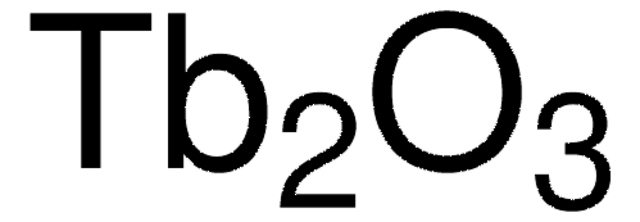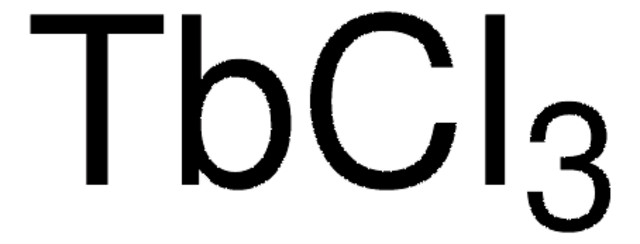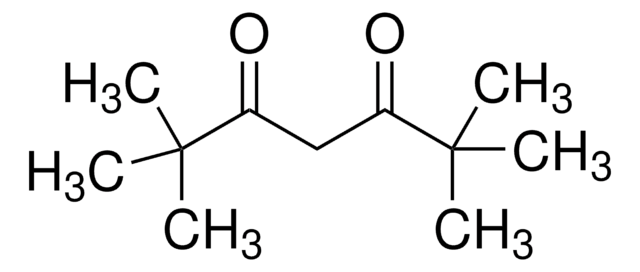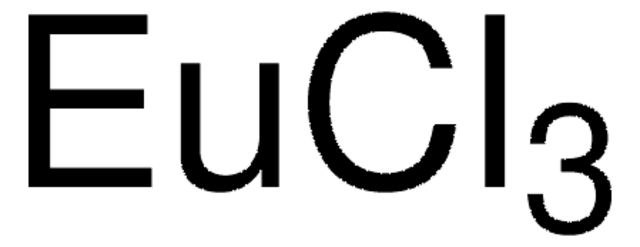212903
Terbium(III) chloride hexahydrate
99.9% trace metals basis
Synonyme(s) :
Terbium chloride hexahydrate, Terbium trichloride hexahydrate, Trichloroterbium hexahydrate
About This Item
Produits recommandés
Qualité
for analytical purposes
Essai
99.9% trace metals basis
Forme
solid
Pertinence de la réaction
reagent type: catalyst
core: terbium
Impuretés
≤1500.0 ppm Trace Rare Earth Analysis
Densité
4.35 g/mL at 25 °C (lit.)
Chaîne SMILES
O.O.O.O.O.O.Cl[Tb](Cl)Cl
InChI
1S/3ClH.6H2O.Tb/h3*1H;6*1H2;/q;;;;;;;;;+3/p-3
Clé InChI
ULJUVCOAZNLCJZ-UHFFFAOYSA-K
Vous recherchez des produits similaires ? Visite Guide de comparaison des produits
Application
It can also be used as aprecursor to synthesize a label-freeaptasensor for the detection of ofloxacin (OFL) residues in the food.
Mention d'avertissement
Warning
Mentions de danger
Conseils de prudence
Classification des risques
Eye Irrit. 2 - Skin Irrit. 2
Code de la classe de stockage
11 - Combustible Solids
Classe de danger pour l'eau (WGK)
WGK 2
Point d'éclair (°F)
Not applicable
Point d'éclair (°C)
Not applicable
Équipement de protection individuelle
dust mask type N95 (US), Eyeshields, Gloves
Faites votre choix parmi les versions les plus récentes :
Déjà en possession de ce produit ?
Retrouvez la documentation relative aux produits que vous avez récemment achetés dans la Bibliothèque de documents.
Les clients ont également consulté
Articles
The rare earth elements impact nearly everyone in the world. All of the people living in advanced technological countries and almost all those living in third world countries utilize the rare earths in their everyday living—the car that one drives (gasoline is refined from oil using rare earth catalysts and catalytic converters reduce the polluting emissions from the automotive exhaust), watching the news on TV (the red and green colors in TV screens), the telephones and computers we use to communicate (the permanent magnets in speakers and disc drives), just to name a few examples.
Notre équipe de scientifiques dispose d'une expérience dans tous les secteurs de la recherche, notamment en sciences de la vie, science des matériaux, synthèse chimique, chromatographie, analyse et dans de nombreux autres domaines..
Contacter notre Service technique













